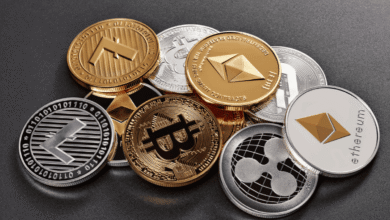WTI climbs above $77.00 as US sanctions trigger global supply fears

- WTI price edges higher to $77.25 in Tuesday’s early Asian session.
- The US increased sanctions against Russian energy, boosting the WTI price.
- The prospect of fewer Fed rate cuts this year might cap the downside for the black gold.
West Texas Intermediate (WTI), the US crude oil benchmark, is trading around $77.25 on Tuesday. The WTI price climbs to the highest level since October 8 as the US sanctions on Russian oil threaten to tighten global supplies.
US President Joe Biden’s administration imposed new sanctions on Russian oil giants Gazprom and Surgutneftegaz, as well as 183 oil tankers, often referred to as Russia’s ‘Shadow Fleet.’ The mounting concerns over supply disruptions could support the black gold in the near term.
“Supply is the key near-term driver, with Biden’s fresh sanctions on Russia’s two main oil producers and Russian tankers further complicating the logistical challenges Russia now faces,” said Chris Weston, Head of Research at Pepperstone.
China’s Exports and Imports in December both beat expectations by a wide margin, according to the National Bureau Statistics of China on Monday. Additionally, China’s Trade Surplus reached a new all-time high of $990 billion. The encouraging Chinese economic data could underpin the WTI price, as China is the world’s second-largest consumer of oil and gas.
On the other hand, the upbeat US December employment report reinforced expectations that the US Federal Reserve (Fed) might not cut interest rates as aggressively this year. A firmer Greenback could reduce demand for energy by making USD-priced commodities like oil more expensive for buyers using other currencies.
WTI Oil FAQs
WTI Oil is a type of Crude Oil sold on international markets. The WTI stands for West Texas Intermediate, one of three major types including Brent and Dubai Crude. WTI is also referred to as “light” and “sweet” because of its relatively low gravity and sulfur content respectively. It is considered a high quality Oil that is easily refined. It is sourced in the United States and distributed via the Cushing hub, which is considered “The Pipeline Crossroads of the World”. It is a benchmark for the Oil market and WTI price is frequently quoted in the media.
Like all assets, supply and demand are the key drivers of WTI Oil price. As such, global growth can be a driver of increased demand and vice versa for weak global growth. Political instability, wars, and sanctions can disrupt supply and impact prices. The decisions of OPEC, a group of major Oil-producing countries, is another key driver of price. The value of the US Dollar influences the price of WTI Crude Oil, since Oil is predominantly traded in US Dollars, thus a weaker US Dollar can make Oil more affordable and vice versa.
The weekly Oil inventory reports published by the American Petroleum Institute (API) and the Energy Information Agency (EIA) impact the price of WTI Oil. Changes in inventories reflect fluctuating supply and demand. If the data shows a drop in inventories it can indicate increased demand, pushing up Oil price. Higher inventories can reflect increased supply, pushing down prices. API’s report is published every Tuesday and EIA’s the day after. Their results are usually similar, falling within 1% of each other 75% of the time. The EIA data is considered more reliable, since it is a government agency.
OPEC (Organization of the Petroleum Exporting Countries) is a group of 12 Oil-producing nations who collectively decide production quotas for member countries at twice-yearly meetings. Their decisions often impact WTI Oil prices. When OPEC decides to lower quotas, it can tighten supply, pushing up Oil prices. When OPEC increases production, it has the opposite effect. OPEC+ refers to an expanded group that includes ten extra non-OPEC members, the most notable of which is Russia.
Information on these pages contains forward-looking statements that involve risks and uncertainties. Markets and instruments profiled on this page are for informational purposes only and should not in any way come across as a recommendation to buy or sell in these assets. You should do your own thorough research before making any investment decisions. FXStreet does not in any way guarantee that this information is free from mistakes, errors, or material misstatements. It also does not guarantee that this information is of a timely nature. Investing in Open Markets involves a great deal of risk, including the loss of all or a portion of your investment, as well as emotional distress. All risks, losses and costs associated with investing, including total loss of principal, are your responsibility. The views and opinions expressed in this article are those of the authors and do not necessarily reflect the official policy or position of FXStreet nor its advertisers. The author will not be held responsible for information that is found at the end of links posted on this page.
If not otherwise explicitly mentioned in the body of the article, at the time of writing, the author has no position in any stock mentioned in this article and no business relationship with any company mentioned. The author has not received compensation for writing this article, other than from FXStreet.
FXStreet and the author do not provide personalized recommendations. The author makes no representations as to the accuracy, completeness, or suitability of this information. FXStreet and the author will not be liable for any errors, omissions or any losses, injuries or damages arising from this information and its display or use. Errors and omissions excepted.
The author and FXStreet are not registered investment advisors and nothing in this article is intended to be investment advice.
Editors’ Picks
Gold price regains positive traction amid retreating US bond yields, softer USD
Gold price attracts some dip-buyers during the Asian session on Tuesday and reverses a part of the previous day’s retracement slide from a one-month top. Reports that Trump’s top economic advisers are mulling a slow ramp-up in tariffs to avoid a sudden spike in inflation trigger a pullback in the US bond yields, which keeps the USD bulls on the defensive and benefits the XAU/USD.
Best Forex Brokers with Low Spreads
VERIFIED Low spreads are crucial for reducing trading costs. Explore top Forex brokers offering competitive spreads and high leverage. Compare options for EUR/USD, GBP/USD, USD/JPY, and Gold.





